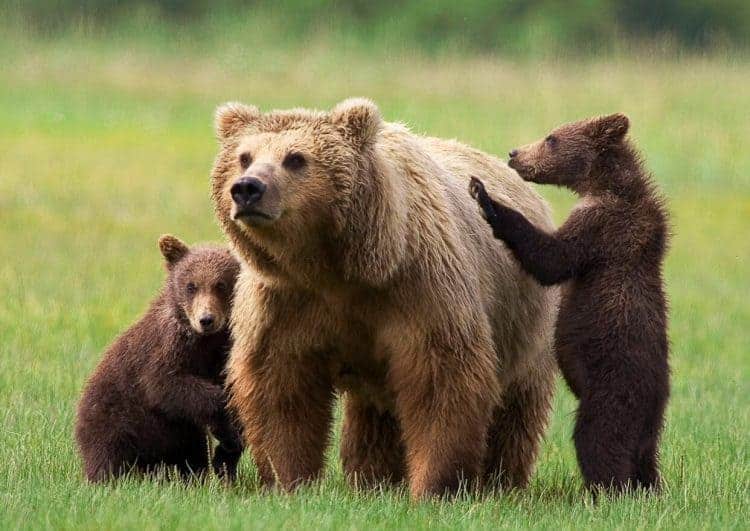A research study published this spring estimates, habitat suitable to narwhals could shrink by a staggering twenty-five percent by century’s end. Thanks to manmade climate change, their watery home is warming faster than anywhere else on Earth. And, in a scant few decades, sea-ice, so vital to their survival, could be gone altogether during Arctic summers.
Narwhals are cetaceans, a family of marine mammals which includes whales and dolphins. Most are found in Canada’s Baffin Bay and Davis Strait, in the high Arctic and Atlantic Arctic. Others live off Greenland, Norway and Russia. Many spend the winter, beneath the icepack, feeding on fish, squid and shrimp and their summers in more open water. They’re believed to be unique among whales – capable of diving as deep as two thousand meters and holding their breath for an astonishing 25 minutes! They can weigh up to two thousand kilograms and reach a length of about five meters. They’re much larger than some dolphin species, but tiny compared to the mighty blue whale. Many migrate along the ice’s edge some 17 hundred kilometres from Canada to Russia.
The males grow long, spiral tusks – actually overgrown teeth – that can protrude up to three metres from their head. While they’re predators, narwhals are also preyed upon. Killer whales (orcas) are believed to be taking them increasingly as warming waters lure the orcas further north.
But man likely remains their prime enemy.
Indigenous hunters of Greenland and Canadian high Arctic – the Inuit – have, for centuries, depended on them as an important food source. Canada officially recognizes the right of the Inuit to hunt them. But they must adhere to a quota system. It’s based on findings from periodic, scientific aerial surveys mandated by both Canada and Greenland, designed to protect narwhal populations from over-harvesting.
Recent numbers are hard to find. But one official survey in 2010 concluded that Inuit hunters took almost a thousand narwhals off Canada and Greenland that year.
So, just how intimately are narwhals tied to their world of ice and snow?
“Narwhals are uniquely adapted to the extreme conditions of an Arctic existence,” the study states, “and their evolution and ecology intrinsically tied to the past and present sea ice dynamics of the region.” Narwhals are known to have lived through extreme climatic changes for thousands of years. Yet they’re also thought to be among the most vulnerable to those changes of any of the northern marine mammals.
The researchers hoped, by studying their past, they could gain an insight into their future. What they found was concerning. Before and after the onset of the last ice age (LGM), more than 26 thousand years ago, both the number of narwhals and their genetic diversity were perilously low. But they “responded positively” to both the warming and expansion of habitat which occurred after it ended some 19 thousand years ago. Their numbers increased, and so did other marine predators like belugas and bowhead whales.
However, the benefits such animals enjoyed in that post-glacial period, may be coming to an end. “Many polar marine predators are being negatively affected by global warming, which is decreasing the availability of habitat and prey,” the study finds. “Although the range and effective population size of narwhals increased post-LGM, their future in a rapidly changing Arctic is uncertain. Narwhal distribution will be further affected in the near future, as the species also faces increased human encroachment, changes in prey availability, new competitors and increased predation rate by killer whales.”
Areas which were once inaccessible to people, due to ice and snow cover, are now receding. This is allowing more activities such as fishing, oil exploration and drilling. And narwhals are known to be easily disturbed, and to flee from areas they like to frequent in summer, like fiords, bays and inlets.
So, are their numbers crashing?
The researchers admit, there’s a good deal of uncertainty when it comes to population trends. World population estimates have ranged from 50 thousand to 170 thousand. As those estimates have wavered, so has their status on the endangered species list of the International Union for Conservation of Nature – from “nearly threatened” to “of least concern.”
A veteran biologist with Fisheries and Oceans Canada, Dr. Steven Ferguson, has extensive experience observing marine mammals in the north. While he doesn’t give hard numbers, he tells Focusing on Wildlife, “Both the Baffin Bay and Northern Hudson Bay populations appear to be relatively constant and do not appear to be depleted.”
However, the good news seems to end there.
“Populations off the eastern shores of Greenland,” he goes on, “seem to be experiencing a decline. And two stocks off West Greenland, appear to be lower in abundance relative to the past.”
So, will these wondrous “unicorns of the sea” continue to ply their ways through the world’s northern oceans just as they have for so long in the past? Or are their numbers destined to dwindle to a dangerous few, like so many other of Earth’s wild things?
This latest study is now published in the Royal Society’s journal,“Biological Sciences.”
Top photo – A pod of narwhals breach in an opening in the ice-pack. Photo credit – US Fish and Wildlife Service.
Larry Powell
I’m a veteran, award-winning eco-journalist living in Shoal Lake, Manitoba, Canada. I’m a member of the Science Writers & Communicators of Canada and the American Association for the Advancement of Science. I’m authorized to receive embargoed material through the Science Media Centre of Canada, the Royal Society, NatureResearch and the World Health Organization. This allows me advance access to important, peer-reviewed research often warning of habitat loss and the threat of extinction facing many wild species, usually thanks to human intrusion and intervention by the hand of man. They then can become "hot-off-the-press" stories which are ready to publish the moment the embargoes are lifted.I publish www.PlanetInPeril.ca (PinP) "Where Science Gets Respect."







Leave a Reply